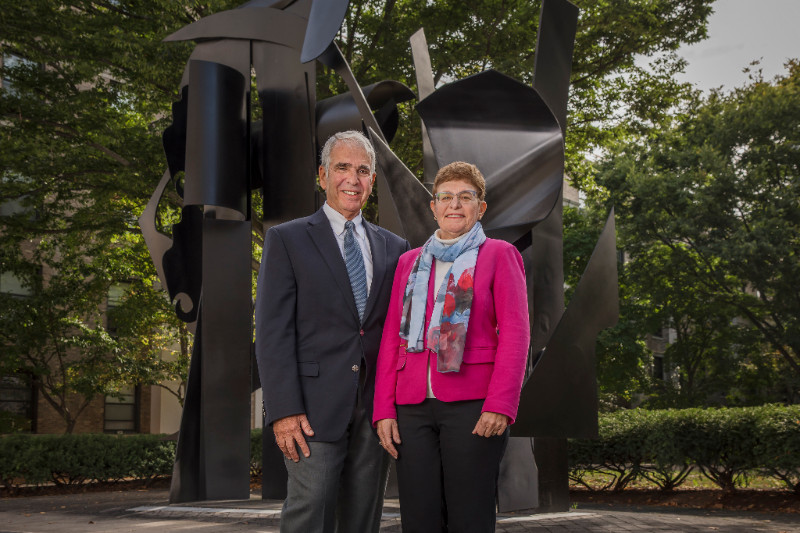Dr. Paul A. Gluck ’68, and his wife, Joan, have enjoyed a life together celebrating a mutual passion for discovery and creativity in both science and the arts. Over 46 years of marriage, Paul and Joan have always known that their desire to help others was not their only common interest.
Joan, a classically trained pianist, was encouraged to attend the Juilliard School, but her goal was always to pursue a career in medicine. She earned an undergraduate degree in anthropology at the University of Pennsylvania before continuing on to medical school. Paul always enjoyed music and the visual arts, attending his first opera, Bizet’s Carmen, at the age of ten. During his undergraduate studies at MIT, his humanities concentration was in the arts.
Paul and Joan met as students in medical school at New York University and were soon married. Visiting art museums and attending the ballet and theater had always been central to their lives, and they soon took advantage of the city’s many arts opportunities—from the New York City Opera to Broadway shows to East Village jazz clubs.
Wanting their family to share in their joy for the arts, the Glucks began bringing their children to museums and live performances from a young age. Both at home and on family trips, they exposed their children to the same formative experiences that had shaped Paul’s lifelong interest.
The Glucks’ interest in the arts remained a constant throughout their lives. For more than 25 years, they have compiled a world-class collection of Northwest Coast First Nations art that was recognized as one of the top 100 collections of any genre by Art & Antiques magazine in 2001. Maintaining the collection is a true labor of love, and Joan has helped curate three museum exhibitions from the collection, most recently in 2016.
In addition to their successful medical careers, this lifelong passion has translated into years of service and support for various arts organizations, including the Boston Symphony Orchestra, where they volunteer at Tanglewood, and the South Florida Folklife Center at the History Miami Museum, which celebrates the cultural diversity that makes up the fabric of cosmopolitan Miami.
Longtime members of the Council for the Arts at MIT (CAMIT), the Glucks have made some wonderful friends who share their love for the arts. Paul and Joan note that CAMIT serves to provide support and advocacy for the arts, and helps to integrate the arts in all aspects of the MIT experience—from teaching to research to appreciation. The arts “are vital and uplifting to our experience as human beings,” notes Joan. “They help us to think and to appreciate different cultures and viewpoints.”
Paul has been an educational counselor at MIT for 25 years, and has served as regional chair for Southeast Florida for the past 20 years. He finds great joy in interviewing the best and brightest high school students who have an interest in MIT, which “gives [him] hope for the future not only for MIT, but also for our country and the world.” Paul often talks about his interest in the arts with the students he interviews, and shares information about the various artistic opportunities available on the MIT campus and beyond.
Most recently, he and Joan committed to support the dynamic work of the MIT Center for Art, Science & Technology (CAST) with a multiyear pledge and planned gift. CAST combines Paul and Joan’s two passions by highlighting MIT’s expertise in science and technology to explore breakthroughs in the performing and visual arts. Paul explains their motivation for supporting the Center, noting that “CAST capitalizes on what MIT does exceedingly well—multidisciplinary collaboration. This enables scientists and engineers to ‘see the world’ through fresh eyes and allows artists to explore news ways of expression.”
“The arts at MIT are flourishing,” adds Paul, “and MIT’s unique approach to the arts is vital to the student experience. CAST is now getting the recognition it deserves as artist and scientist creatively work together. As the demand for limited resources continues to grow, it is imperative that others support the arts at MIT. We strongly believe that this is the future of artistic innovation.”
To learn more about the Center for Art, Science & Technology, visit: arts.mit.edu/cast

